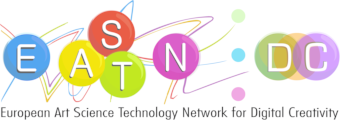From the end of the 19th century, the Historiography of Art evolved to a great extent through theories and methods following the scientific method that is traditionally inductive and theory-driven: arthistorical theories have taken the form of argumentation based on empirical observations, pre-existing practices and other valid philosophical and epistemological theories. Often they appeared connected to methods, which are their empirical application on artworks.
There is a basic distinction between modern and postmodern arthistorical theories. The modern ones have as central axis the interpretation of artworks through the understanding of the purposes of both their creators and their cultural context. On the other side, postmodern theories focus on the interpreter’s view as the only one capable of creating meaning. Furthermore, arthistorical theories can be divided into those that have a philosophical ontological orientation and into those that focus more on empirical data in order to systematize and theoretically establish pre-existing practices. The former basically answer questions both about the ways in which art evolves and about how we perceive the changes that artworks undergo over time, while the latter focus more on the artworks themselves regarding their systematization according to both their empirical data and their interpretations.
Digital Art History belongs to the postmodern paradigm and is data-driven: its main feature is the collection of a large amount of digital data that in the main allow for statistical conclusions, mapping and comparative procedures. As it is still in its infancy, it is formed more as a practice (than a theory or a method), as once was the case e.g. with iconography or connoisseurship. Its theoretical foundation has been though the aim of many philosophical-theoretical publications. There are connections with theoretical discussions on the role of Big Data in the sciences, concerning problems such as the distinction between human and artificial intelligence, the nature of data (and their interpretative procedures), and the argument of the "death of theory" vs. that of the "power of correlations". The reference is often to the annihilation of the interpretive process that has traditionally been the central method of Art History. However, interpretation is still central and required by the Art Historian in the various stages of his/her work and his/her collaboration with the information scientist or the computer: during the selection of objects and their features, at the choice of the correlations of the features for the creation of clusters and moreover at the analyzing- data process through specific criteria.
The theoretical issues that will be discussed in this paper, as well as others widely analyzed in contemporary literature, indicate that claims often raised about DAH as a “theory-neutral method” should not be taken for granted. Obviously, DAH started as a practical application of the possibilities of digital technology, but as belonging to the humanistic science of Art History, there are systematic efforts for its theoretical establishment.
Digital technology provides the tools for the development of digital arthistorical methods. Each method differs according to how the digital tools are used to achieve specific purposes. Digital methods are related both to pre-existing traditional methods of the modern and postmodern paradigm and their theoretical foundation. There are, for example, digital programs that provide the tools for iconographic studies in the spirit of Warburg and Panofsky: the wide-scale digitization of art historical photo-archives combined with the increase in accuracy and recall of automatic pose and gesture detection methods from Computer Vision, may create huge advantages for iconographic research. Moreover, as a method of the postmodern paradigm, DAH shares with other postmodern theories and methods, such as the feminist, the common intention of the emergence of new qualifiers that seek to change the way we study art.
Thus, there are two kinds of theories that play a significant role for the theoretical establishment of DAH. First, those that explain how arthistorical knowledge can be generated by digital tools and big data procedures, which are connected to the larger discussion about the role of digital technology in science. Second, those connected to traditional arthistorical theories and methods, and which draw heavily on them. In addition, there is a lurking debate over whether DAH can develop new innovative ways of studying art.
The following points will, therefore, be explored:
• What are the key features and capabilities of DAH so far?
• What are the issues of the theoretical discussion about the relation between digital technology and science, and how does it concern DAH?
• How is DAH related to traditional arthistorical methods and theories?
Back
“Reflections: Bridges between Technology and Culture, Physical and Virtual”
is supported by:






